If you think about potatoes and sweet potatoes growing underground, you don’t really think about what is going on around them. What is in the soil, for example. Or how much water they should be sitting in. The thing is, that these are all factors that affect the health and growth of potatoes and must be taken into account.
Potatoes are heavy feeders, requiring high nutrient levels. They are also sensitive to too much water, so the soil should be loamy and well-drained. It also needs to be fairly acidic, with pH 5.5 – 6.5. High levels of organic matter allow optimal soil pH and nutrient availability.
This post unpacks what you should be looking for in the soil for your potatoes.
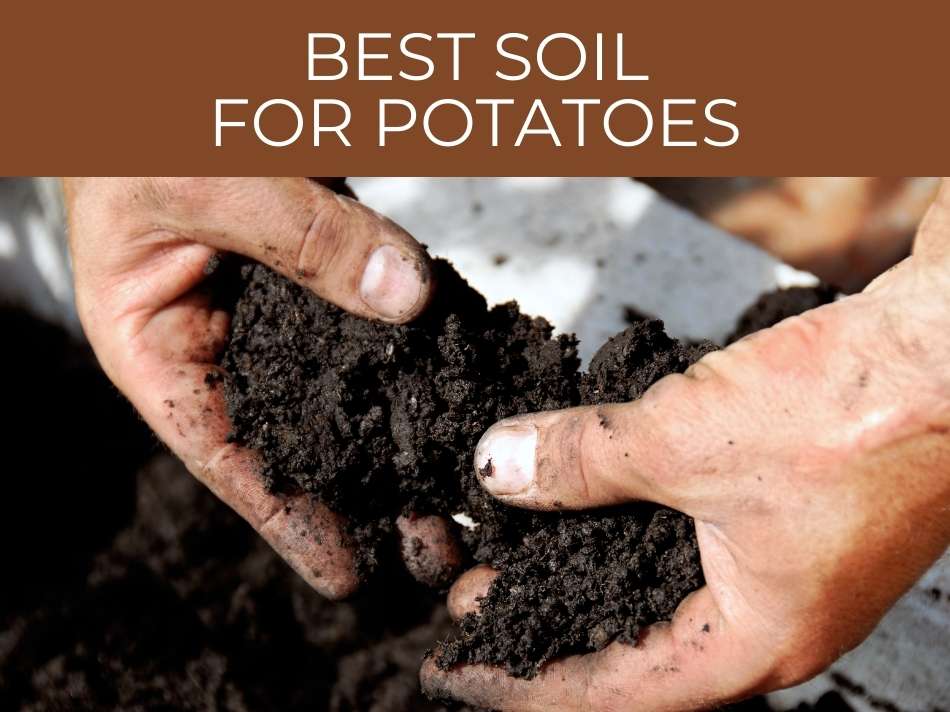
Best soil for potatoes
The best soil in which to grow potatoes is a well-drained loam, with a high content of sand. It must be quite loosely packed. The soil should be slightly acidic, with an optimum pH between 5.5 and 6.5, and also high in organic matter.

The best soil for potatoes is well-drained and somewhat sandy.
There must not be a high clay content.
Because potatoes are sensitive to excess water, they need soil that is quite loose and loamy.
If the soil is full of too much clay, it either retains too much water, or tends to dry up and become hard.
Too much water can result in the roots and tubers becoming waterlogged, which can cause them to rot.
If potatoes grow in poorly drained soil, the tubers are more likely to produce tubers that are diseased.
In very hard soil, the potato tubers struggle to grow and their growth may be stunted.
The tubers themselves may also be bruised.
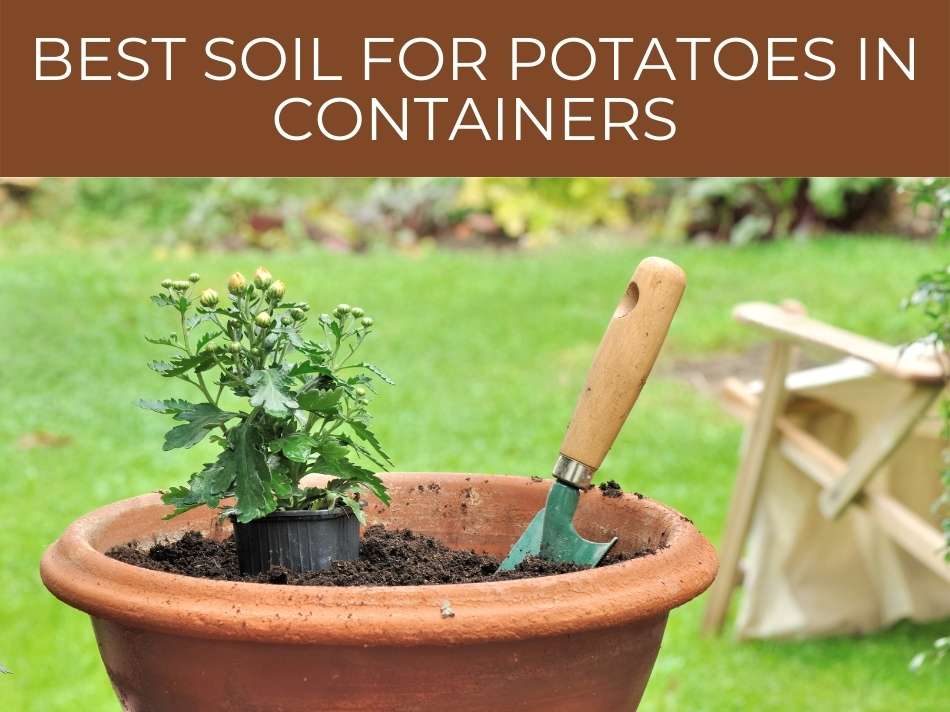
Best soil for potatoes in containers
For growing potatoes in containers, use a loamy, well-draining soil; this should be able to get rid of excess water efficiently in a container, as long as the container has drainage holes. Optimal soil pH is 5.5 – 6.5, and potatoes also need soil high in organic matter.
Potatoes grown in containers need to be planted in the correct type of soil.
The quality of the soil is also important.
Even though potatoes grow best in loose, loamy soil, it is not always easy to reproduce these conditions in containers.
This is why you need to make sure you use soil that has been formulated for use in containers.
Even if you use the correct soil, you must make sure that it can drain adequately.
There are various mixes of potting soil available.
Use a peat-based mixture, which will keep sufficient moisture and let the excess water run off.
See how far apart to plant potatoes.
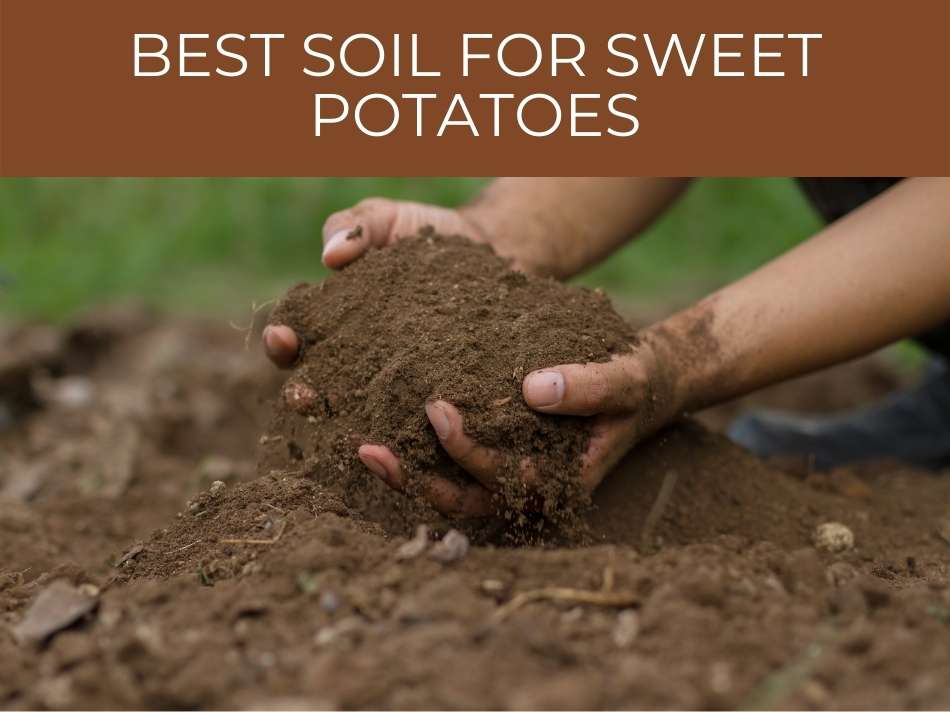
Best soil for sweet potatoes
Sweet potatoes are similar to regular potatoes, & need a relatively sandy loam soil. Too much water retention in soil can lead to the tubers becoming rotten. The soil must also be somewhat acidic; pH should be 5.5. – 6.5.
Sweet potatoes grow best in a loam soil that is quite sandy.
The soil must be well-drained, because the tubers are sensitive to too much water.
If sweet potato plants become waterlogged, then the tubers may rot.
The optimum pH for the soil is between 5.8 and 6, although they can tolerate down to 5.5pH.
As the plants grow, it may be necessary to supplement the soil to maintain the acidity.
See our complete guide to growing sweet potatoes.
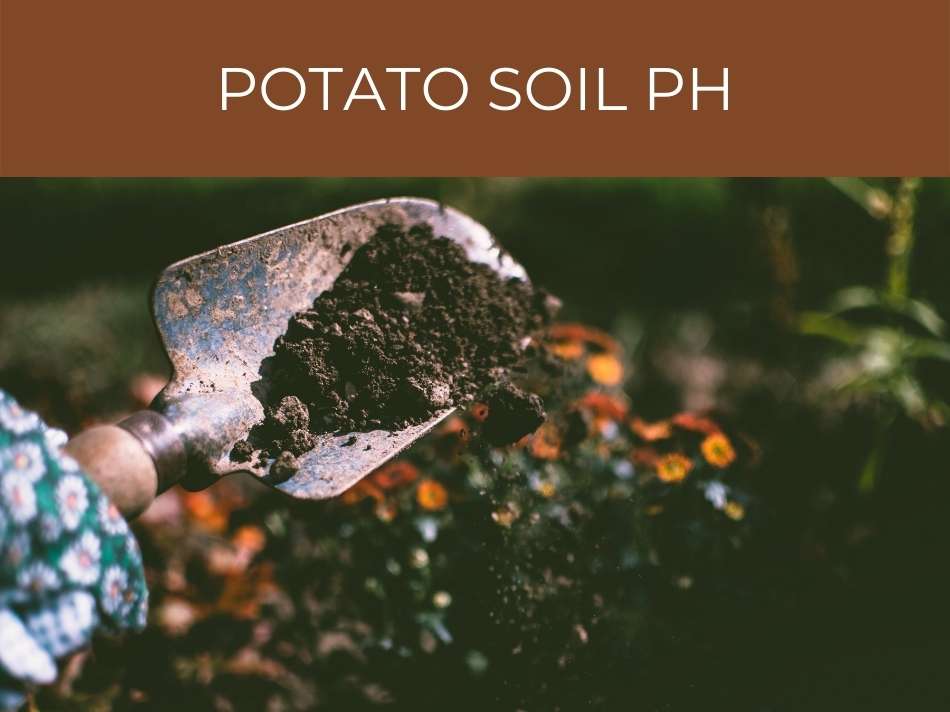
Potato soil pH
Potatoes prefer a more acidic soil, which means a pH lower than 7. The optimum measurement is between 5.5 – 6.5. Potatoes grown in more alkaline soil tend to be more prone to disease. Elemental sulfur can be added to soil to lower (acidify) the pH.
Potatoes prefer to grow in soil that is acidic.
This means that the pH should be below 7.
The optimum pH is between 6.0 and 6.5, but potatoes can tolerate lower levels, down to 5pH.
If the soil pH is higher than 7, the potatoes may still grow, but they will be sensitive to diseases.
Check out the best fertilizer for potatoes.
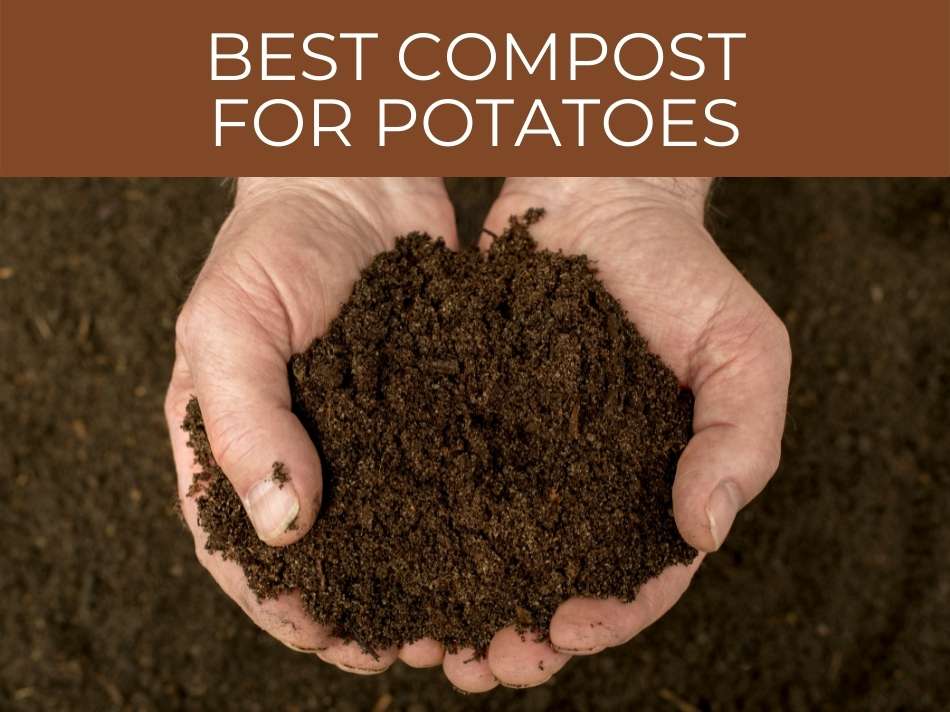
Best compost for potatoes
Potatoes are heavy feeders and will need a rich compost mix. It is best to use a compost that is well-aged & has a high organic content. The mix should also have quite an even balance of compost to top soil, to ensure good drainage. Optimal soil pH for potatoes is 5.5 – 6.5.
When you choose compost for your potatoes, you should use compost that has been well-aged.
This means it will be rich in organic material.
Because potatoes are quite heavy feeders, they need quite a lot of organic material for growth, which is what the compost will give them.
Most compost is available in mixes, with varying compost to top soil ratios.
To suit potatoes, the ratio of organic material to top soil in the compost mix should be 60 to 40.
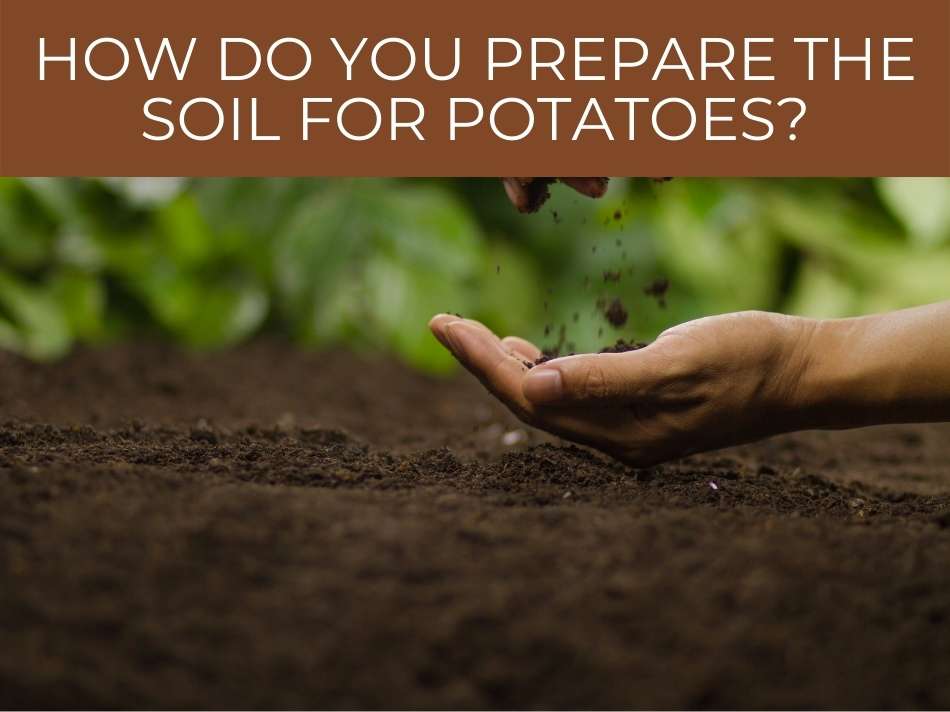
How do you prepare the soil for potatoes?
Potatoes are heavy feeders and need more nutrients than many other plants. This means that preparing the soil before planting is essential. You will need to clear the area, break up the soil, make sure the pH is correct (5.5 – 6.5) and that the soil will drain well.
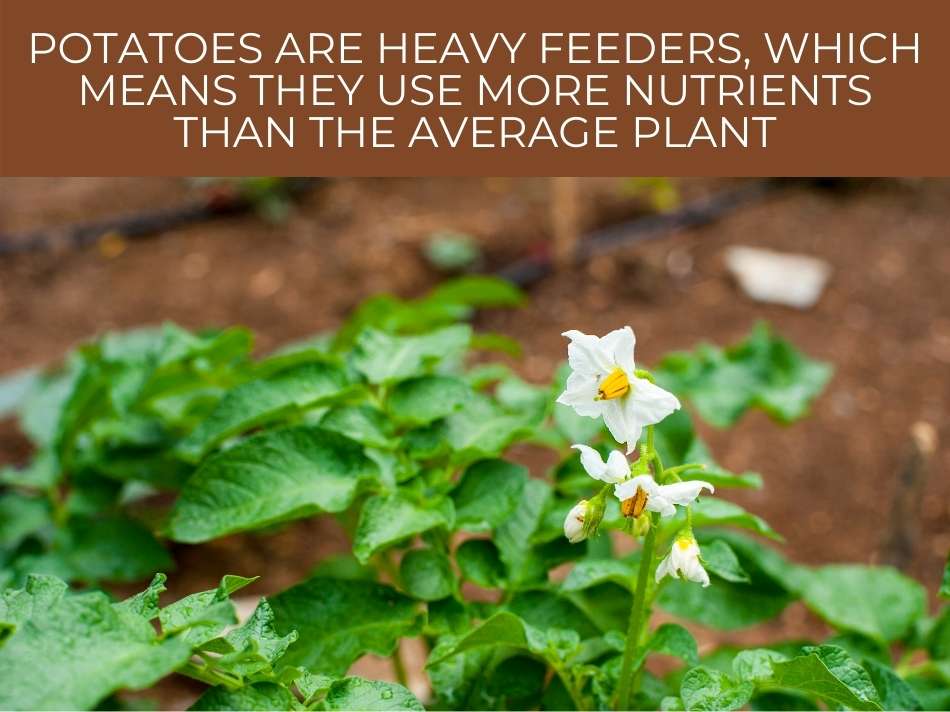
Potatoes are heavy feeders, which means they use more nutrients than the average plant.
This also means they usually need more fertilizer more often than other plants.
You can pre-empt the need for too much extra input at the beginning by preparing the soil thoroughly for planting.
Begin by clearing the area you will use, removing all vegetation and any stones.
You should also aim to remove any big rocks that may be buried quite shallowly in the area.
As root vegetables grow underground, they can strain against any obstructions (like the rocks) and this will affect their growth, or even bruise them.
The next step is to break up the soil with a fork to at least six inches below the surface.
Potatoes need soil that is rich in organic matter, so you should gauge the amount already in the soil.
Before you plant, mix compost into at least the top few inches of soil.
If the soil is loamy and well-drained, then you can mix in the compost into the top two or three inches.
In soil rich with clay, you will need to mix in more compost, as it will help with water-retention.
In this soil, you should mix the compost to at least five or six inches deep.
When the soil is prepared, you can plant the potatoes.
See our complete guide to growing potatoes.
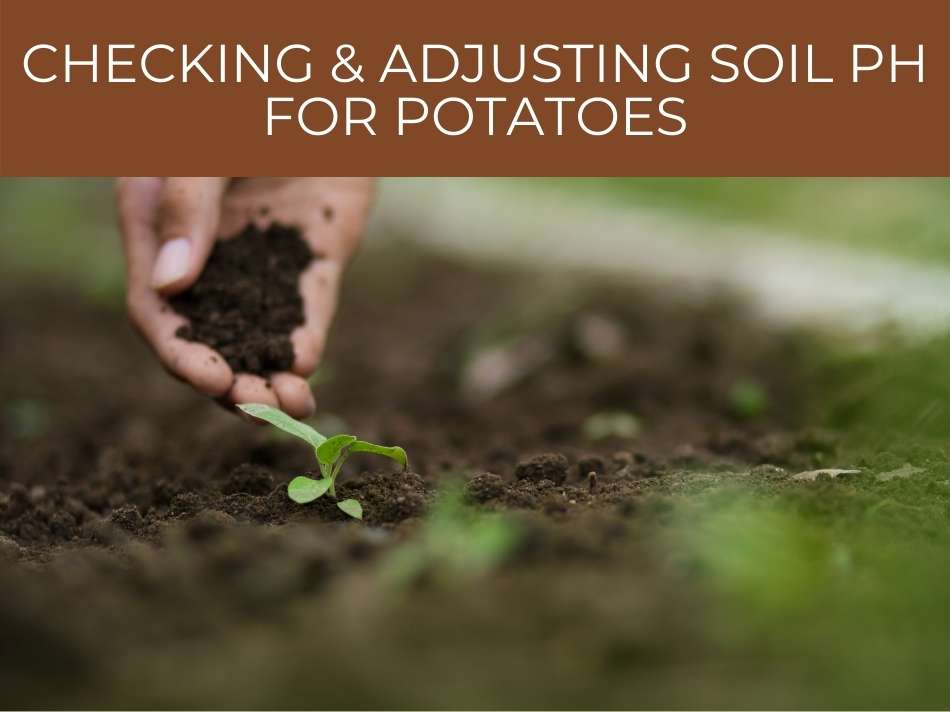
Checking & adjusting soil pH for potatoes
Then, make sure that the soil is the correct pH for the potatoes.
Begin by ascertaining the existing pH by testing the soil.
Professional tests can be arranged, but you can also do a home test.
If the results of the test show the soil is too alkaline, you will need to mix sulfur, compost or an organic liquid feed into the soil.
Although potatoes prefer an acidic soil, don’t let it get too acidic.
You may need to add some lime, broken egg shells, or bone meal to the soil to raise the alkalinity a bit.
When you have treated the soil, water it and let it sit for a day to settle, then test it again.
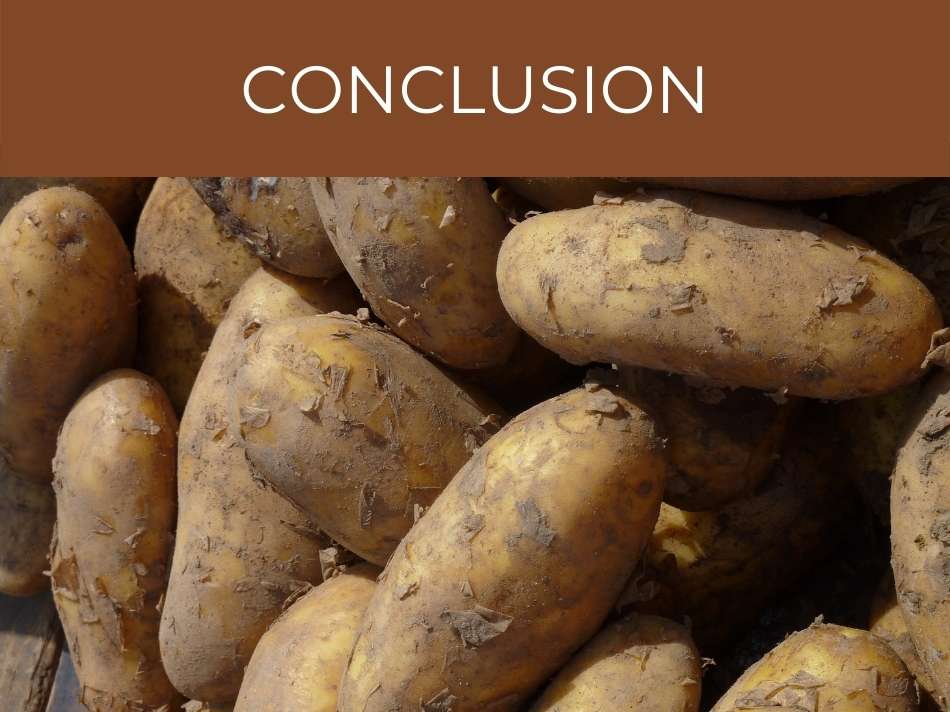
Conclusion
Both potatoes and sweet potatoes prefer to grow in soil that drains well and is quite acidic. By preparing the soil properly before planting, you will make sure the plants have the best substrate in which to grow.

